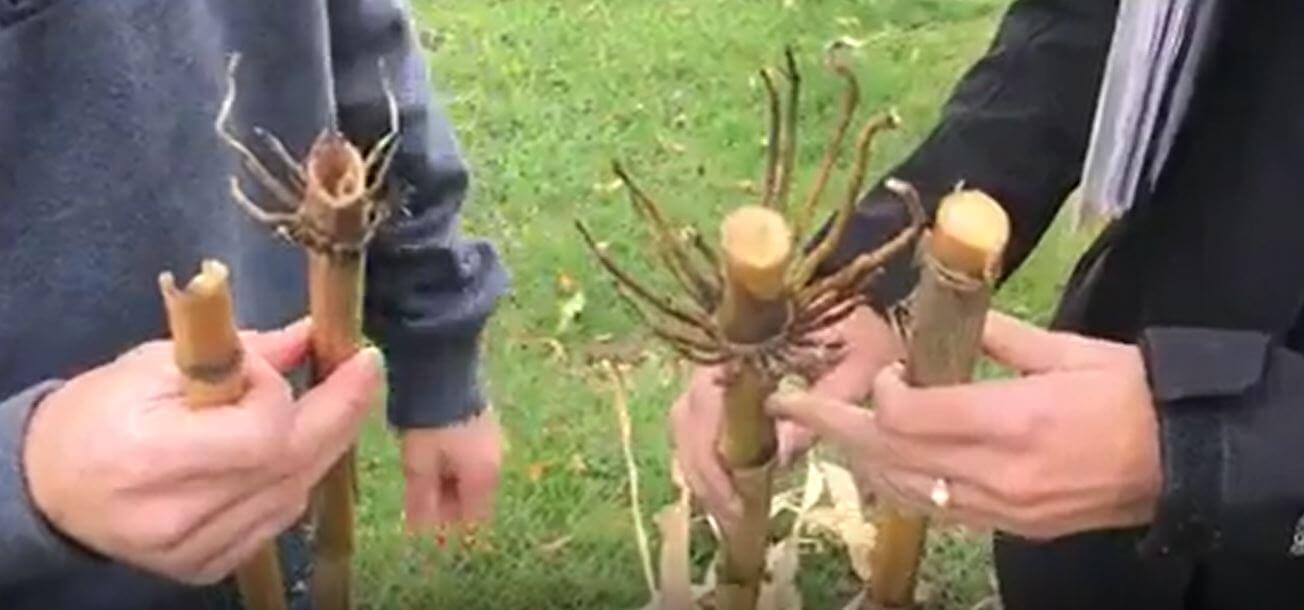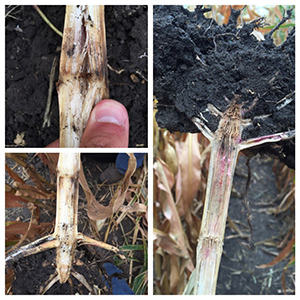Corn produces sugar by means of photosynthesis. Sugar, the energy source of all cells, moves to growing points in the stalk and roots during vegetative growth. After pollination, priority for sugar shifts to developing kernels. Approximately 80% of the sugar demand for grain fill is met by photosynthesis, while the remaining 20% comes from storage in the stalk. After pollination, some of the sugars from the stalk are used for cell maintenance throughout the plant. If stress reduces photosynthetic capabilities, more sugars are taken from the stalk to meet grain fill demand. If insufficient sugar is produced, stalks and roots will eventually be weakened, allowing stalk rot organisms to invade earlier and breakdown or plug up tissue.
Two different methods can be used to scout out stalk rots: the push test or pinch test.
- PUSH TEST: Randomly select 20 plants from five different areas of the corn field (100 plants total). Push the top portion of the plant, and note whether the plant lodged or had the stalk strength to remain standing.
- PINCH OR SQUEEZE TEST: an assessment of the lower stalk. Again, randomly select 20 plants from five different areas of the corn field (100 plants total). Remove the lower leaves and pinch or squeeze the stalk above the brace roots. If the stalk is easily squeezed, with moderate pressure, it is rotting on the inside. Record the number of rotted stalks.
Regardless of which method is used, if 10 to 15 percent of the plants are lodged, stalk rot is prevalent in the field. If this condition occurs, early harvesting should be considered to prevent losses as the corn stalks will have less time to rot, and subsequently lodge in the field. Extra grain drying costs may be incurred, although those costs could be covered by better harvest efficiency. |


